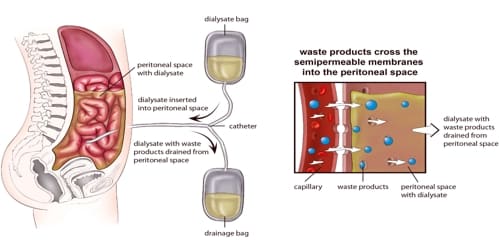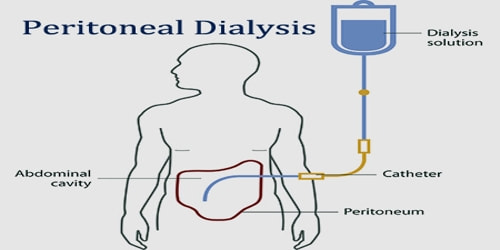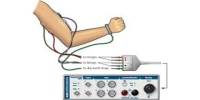Peritoneal Dialysis
Definition: Peritoneal dialysis (PD) is a treatment for kidney failure that uses the lining of people’s abdomen, or belly, to filter their blood inside their body. Health care providers call this lining the peritoneum. It is used to remove excess fluid, correct electrolyte problems, and remove toxins in those with kidney failure.
Peritoneal dialysis has better outcomes than hemodialysis during the first couple of years. Other benefits include greater flexibility and better tolerability in those with significant heart disease.
Methods (or Types) of peritoneal dialysis: Peritoneal dialysis is a relatively straightforward procedure, and there are two different methods.
The first is called continuous ambulatory peritoneal analysis (CAPD). With this method, a tube (called a catheter) is surgically inserted into the body. When it’s time to perform the procedure, a sterile fluid called dialysate is injected into the catheter where it flows to the abdominal cavity and sits. Holding the bag above the head allows gravity to do all of the work moving the fluid into the body, and this method is ‘machine-free.’ This method requires 3-4 exchanges per day and an additional exchange at night.

The second method is called continuous cycling peritoneal dialysis (CCPD). This method is similar to CAPD except that a machine called an automated cycler pumps the dialysate into and out of the body, rather than relying on gravity. Typically, the automated cycler works while people sleep, completing 3-5 exchanges overnight. This allows the patient more freedom and flexibility during the day but requires them to be hooked up between 10-12 hours each night. With both methods, each exchange can take anywhere between 30-40 minutes.
The main differences between the two types of peritoneal dialysis are
- the schedule of exchanges
- one uses a machine and the other is done by hand
If one type of peritoneal dialysis doesn’t suit the patient, talk with the doctor about trying the other type.
Health Effects / Risks of Peritoneal dialysis: PD is less efficient at removing wastes from the body than hemodialysis, and the presence of the tube presents a risk of peritonitis due to the potential to introduce bacteria to the abdomen.
Complications of peritoneal dialysis can include:
- Infections. An infection of the abdominal lining (peritonitis) is a common complication of peritoneal dialysis. The risk of infection is greater if the person doing the dialysis isn’t adequately trained.
- Weight gain. The dialysate contains sugar (dextrose). The extra calories can also cause high blood sugar, especially if patients have diabetes.
- Hernia. Holding fluid in patient’s abdomen for long periods may strain their muscles.
- Inadequate dialysis. Peritoneal dialysis can become ineffective after several years. Patients might need to switch to hemodialysis.
PD may also be used for patients with cardiac instability as it does not result in rapid and significant alterations to body fluids, and for patients with insulin-dependent diabetes mellitus due to the inability to control blood sugar levels through the catheter.
The cost of dialysis solution in the developing world is about 6.77 to 7.30 USD per two-liter bag or about 12,000 USD per year. In the United States, peritoneal dialysis costs the government about 53,400 USD per person per year. As of 2009 peritoneal dialysis was available in 12 out of 53 African countries.
Information Source:
















